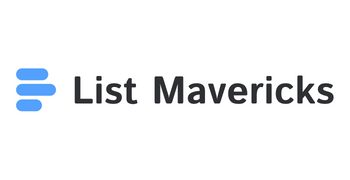A LinkedIn consultant is a professional who helps people and businesses get the most out of LinkedIn. A LinkedIn consultant gives expert advice to improve profiles, grow networks, and build strong brands for better results on the platform. These experts know how to use LinkedIn’s tools to make profiles stand out and connect with the right audience.
The need for LinkedIn consultants has grown as more people want to grow their careers and companies want to find new clients on LinkedIn. Consultants offer guidance on building connections, creating content, and using LinkedIn for networking, marketing, or lead generation. Many businesses hire them to help reach specific goals they cannot easily achieve alone, as explained on this LinkedIn consultant hiring guide.
Key Takeaways
- LinkedIn consultants help users improve their presence and reach goals on LinkedIn.
- They give advice on profile optimization, branding, and network growth.
- Experts can support business growth through training, strategy, and lead generation.
What Is a LinkedIn Consultant?

A LinkedIn consultant is a specialist who helps individuals and businesses make the most of LinkedIn. They provide targeted support in optimizing profiles, increasing visibility, and building effective networking strategies.
Key Roles and Responsibilities
A LinkedIn consultant takes on several important tasks. They analyze current LinkedIn profiles and business objectives to find improvement areas. Their main job includes profile optimization, helping clients highlight skills, achievements, and experience in a way that attracts attention.
They guide on developing a content strategy that engages the right audience. Consultants teach networking tactics, such as how to connect with decision-makers and build long-term relationships. Many also set up and manage lead generation systems to help with business growth.
Some LinkedIn consultants provide one-time services on specific projects, while others offer ongoing support or training. It’s common for consultants to conduct workshops or coaching sessions for teams or individuals. By focusing on measurable outcomes, they help clients increase profile views, connections, and job or sales opportunities. More details about what they do can be found in this expert and strategy guide.
Core Skills and Expertise
Being a LinkedIn expert requires strong communication skills, marketing knowledge, and deep familiarity with how LinkedIn works. Good consultants know how to write compelling summaries, craft notable headlines, and select the right keywords to improve search visibility.
They stay up-to-date with changes to LinkedIn’s platform and best practices. Consultants must analyze data, such as engagement rates or network growth, to measure the results of their strategy development. Experience with tools for content scheduling or analytics is also valuable.
They should be comfortable with both personal branding and corporate profile management. Effective consultants act as both strategists and trainers. They often help with content ideas, such as writing posts, sharing articles, or creating videos, helping clients increase their presence. More details on how consultants can help with content can be found here.
LinkedIn Consulting vs. Other Consulting Services
LinkedIn consulting focuses specifically on the LinkedIn platform and its unique tools. Unlike general marketing or management consulting, LinkedIn consultants work mostly on increasing a client’s presence within LinkedIn itself. Their work centers on profile optimization, content planning, networking, and lead generation.
Other types of consultants may offer broad business improvements, digital marketing, or finance strategies across many channels. A LinkedIn consultant, however, is a niche expert. They help people and companies stand out and reach goals only through LinkedIn, rather than multiple social channels or business operations.
Clients often hire LinkedIn consultants when they want to boost job searches, develop a consulting business, or attract partnerships. This type of service is best for those looking to improve their LinkedIn consultant profile, business reputation, or online networking. You can learn more about the differences and what sets LinkedIn experts apart in the LinkedIn consultants guide.
Optimizing Your LinkedIn Profile

A strong LinkedIn profile can help users get noticed by employers and clients. Making improvements in key areas, such as keyword use and digital presence, leads to better profile optimization and better results.
Profile Audit and Review
A thorough profile audit is the first step in the optimization process. Users should review each section of their LinkedIn profile to check for completeness, consistency, and professionalism. This includes checking the headline, summary, work experience, education, and skills.
Having a recent, high-quality profile photo is important. So is reviewing for grammar and spelling errors. Linking or listing relevant achievements or certifications, especially those that set the user apart, is helpful.
Creating a checklist can simplify this task:
- Update profile photo
- Edit headline and summary
- Confirm job titles and dates
- Add skills and endorsements
- Review recommendations
Some guides suggest asking a peer or a LinkedIn consultant for a profile audit for a second opinion. Regular audits keep a profile up to date.
Keyword Research and Implementation
LinkedIn uses keywords to help match profiles with searches from recruiters and employers. Using relevant keywords in the profile increases visibility in search results and can bring more connections.
Identify industry-specific keywords by reviewing job descriptions, trending skills, or other professionals’ profiles. Include these keywords naturally in the headline, summary, and work experience sections. Use a blend of broad and specific terms to reach a larger audience.
For best results:
- Focus on job titles, industry skills, and certifications
- Avoid keyword stuffing
- Repeat main keywords in several sections
Implementing keywords for profile optimization helps users appear higher in LinkedIn search rankings.
Writing a Compelling Summary
The summary section should tell a clear, concise story about the user’s experience, skills, and values. It should also highlight major achievements and unique qualities.
Begin with a strong opening sentence that captures attention. Use short paragraphs or bullet points for easy reading. End with a call to action, such as inviting viewers to connect or message for opportunities.
Good summaries usually:
- Address who the user is and what they do
- Highlight top skills and results
- Show personality and passion
- Provide contact info for freelance or consulting offers
A well-crafted summary is one of the most powerful elements for attracting interest from employers or clients.
Digital Resume and Online Presence
A LinkedIn profile works as a digital resume and reflects the user’s broader online presence. Making sure the profile includes detailed work history, relevant media (such as project links or portfolios), and measurable results is important.
Add documents, videos, and other files to make the profile more interactive and boost digital presence. Keep information consistent with other online resumes or professional profiles.
Ways to improve digital presence:
- Display work samples, presentations, or press mentions
- Keep résumé details and career history current
- Link to personal websites or portfolios
An updated and engaging digital resume makes a LinkedIn profile more attractive to viewers and helps build credibility.
Building a Strong Professional Brand

A successful LinkedIn consultant stands out by shaping a clear personal brand, building authority as a thought leader, and earning trust through recommendations. Each area calls for specific actions and ongoing attention.
Personal Branding Strategies
A strong personal brand starts with a complete and professional LinkedIn profile. This means using a high-quality profile photo, writing a clear and keyword-rich headline, and creating a summary that describes unique skills and experience.
Sharing regular updates, articles, or insights related to consulting helps professionals stay visible in their network. Success also depends on making connections with other consultants, business leaders, and industry groups.
Building a network can lead to more referrals and chances to show skills. Consistency is key—posting useful content and engaging with others regularly helps build credibility over time. Tools like LinkedIn’s analytics also allow users to track what works best for their brand. Connect with practical brand building strategies on LinkedIn for consultants.
Establishing Thought Leadership
Thought leadership means being recognized as an expert in your field. This can start by publishing original LinkedIn articles, sharing case studies, and providing well-researched answers to industry questions.
Contributing insightful comments on trending topics or joining professional discussions also helps boost visibility. Writing about challenges and solutions in consulting attracts attention from both peers and potential clients.
Using a mix of formats—such as short updates, polls, and long-form articles—helps reach different audiences. Maintaining a regular posting schedule is important. Inconsistent activity can cause followers to lose interest. For deeper guidance on building professional authority through content, following best practices is useful.
Gaining Influence and Recommendations
Gaining influence requires engaging with connections in meaningful ways. This includes responding to comments, joining group discussions, and sharing the work of others in the field.
Requesting recommendations and displaying them on a profile are also important steps. Recommendations, along with testimonials from previous clients, serve as social proof. They show potential clients and employers that professional skills are trusted and valued.
Offering genuine recommendations to others can often inspire them to return the favor. Strong testimonials can help set a consultant apart from competitors. Learning how to drive profile engagement and earn trust is explained further in resources on gaining LinkedIn influence and recommendations.
Content and Engagement Strategy

A strong LinkedIn consultant goes beyond profile tweaks. They use proven tactics for content planning, publishing, and sustained engagement to build trust and drive results.
Content Creation Tactics
A clear content strategy starts with understanding the audience. Consultants recommend making a content calendar and mixing up post types: text updates, images, polls, and short videos work well. Sharing industry news, insights, and case studies gives value. Including quick tips and how-to posts encourages readers to stop scrolling.
Easy-to-digest posts get the most reactions and shares. Consultants often suggest including a direct call to action in every post. This might be an invitation to comment, share their thoughts, or check a link. Good posts are consistent, helpful, and authentic. Using LinkedIn’s analytics helps adjust content for better engagement and reach.
Content Marketing on LinkedIn
Content marketing on LinkedIn focuses on sharing knowledge rather than sales pitches. Consultants help businesses develop themes for their posts, such as leadership insights, client wins, or market trends. Telling short success stories or spotlighting team achievements can show credibility and attract connections.
Businesses often use LinkedIn articles, image carousels, and short videos to highlight their brand. Value-driven content is more likely to prompt meaningful interactions. Scheduling regular post times and developing branded templates for graphics add a professional touch. For step-by-step strategies for content marketing, see this LinkedIn content strategy guide.
Engagement and Relationship Building
Consultants stress that content alone is not enough. They must actively comment on industry posts, reply to questions, and message new connections to build real relationships. Regular engagement, such as reacting to others’ updates and joining LinkedIn groups, expands reach and trust.
Relationship building also means following up after people engage with your posts. Thanking commenters or offering further insights can set up meaningful conversations that lead to business opportunities. Consistent interaction shows others that a person is approachable and knowledgeable, creating a strong LinkedIn presence. For more on these strategies, explore this LinkedIn consultant engagement guide.
Expanding Your Network and Generating Leads

Using LinkedIn as a consultant is all about building relationships, reaching the right connections, and turning those connections into business opportunities. Effective networking and lead generation tools help consultants expand their professional network and grow their business.
Professional Networking Techniques
A strong professional network on LinkedIn starts with a complete and optimized profile. Consultants should use a recent photo, clear headline, and write a summary that highlights skills and expertise. Joining industry groups and taking part in discussions show active involvement.
They can use these groups to connect with others, learn about trends, and get advice. Posting updates, sharing articles, and commenting on relevant topics improves visibility with industry peers. A table can help track key networking activities:
| Activity | Frequency | Goal |
|---|---|---|
| Join a group | Weekly | Expand contacts |
| Comment on posts | Daily | Increase visibility |
| Share industry articles | 2-3x/week | Show expertise and stay relevant |
When connecting, it is good practice to send a personalized message to start conversations and set the tone for future collaboration.
Lead Generation Strategies
For consultants, lead generation means finding people who could use their services and starting genuine business conversations. Using LinkedIn tools like Sales Navigator, they can search for decision-makers and filter by industry, location, or company size. This saves time and improves the chance of finding quality leads.
Routinely sharing insights, case studies, or client wins as posts attracts attention from potential clients. Running LinkedIn Ad campaigns or using lead forms can collect contact info directly from interested parties. It is important to nurture leads by following up and adding value, not just pitching services.
A good mix of sharing expertise and direct outreach can lead to more business opportunities.
Connecting with Potential Clients
Connecting with potential clients starts with targeted outreach. Consultants should research a prospect’s background and personalize connection requests. Avoid sending the same message to everyone. Mention common interests or pain points in the initial note.
After connecting, they can build trust by offering insights or solutions relevant to the client’s challenges rather than jumping straight to a sales pitch. Staying in touch through regular updates, messages, or sharing useful resources helps maintain relationships.
Engaging with prospects’ posts and offering helpful comments shows genuine interest. This approach leads to stronger connections and more chances for collaboration or referrals down the line.
Coaching, Training, and Career Development

Effective career growth depends on strong leadership, targeted coaching, and preparation for the changing job market. Good consultants offer tailored support, technical guidance, and access to highly skilled networks.
Leadership and Executive Coaching
Leadership and executive coaching help professionals advance within organizations. Coaches work with clients to identify strengths, address weaknesses, and develop clear goals. They use proven frameworks to build confidence, support decision-making, and create long-term leadership plans.
Executive coaching often includes training in delegation, team management, and communication. Many coaches hold certifications in leadership or executive coaching, with several recognized credentials such as EMCC or ICF accreditation. Services may include workshops and 1-on-1 sessions that focus on real workplace challenges.
Some coaches, like those featured on LinkedIn’s top career coaches list, also guide clients through corporate transitions or help them prepare for higher management roles. The aim is consistent, measurable growth with support from experienced professionals.
Interview Preparation and Job Search
Interview preparation and job search coaching provide structured support for professionals seeking new roles. These services often include resume writing, mock interviews, and tips for answering common or difficult interview questions.
Job search coaching teaches candidates how to apply for jobs efficiently. Coaches guide clients on building personal brands, networking with decision-makers, and using platforms like LinkedIn. They often review resumes and cover letters to ensure clarity and impact.
Some coaches, such as those mentioned on Simply Coach, also help with job offer negotiations and transitioning to new jobs smoothly. A focus is placed on developing both soft and technical skills needed by employers.
Innovation and Change Management
Innovation coaching helps leaders introduce new ideas and adapt to rapid workplace changes. Consultants support organizations by providing training in creative thinking, problem-solving, and leading teams through transitions.
Change management coaching prepares employees for shifts in processes or culture. It involves practical tools for handling uncertainty, including communication strategies, risk analysis, and feedback loops. Some coaches support diversity, equity, and inclusion in their change management approach, aligning with modern workplace needs.
Firms with experience in leadership and team development deliver tailored workshops for companies adapting to industry trends or digital transformation. Results-focused coaching encourages skill-building and adaptability.
Collaboration with Recruiters
Collaboration with recruiters is vital for candidates navigating the job market or companies aiming to fill technical roles. Consultants and career coaches often have partnerships with recruiters, giving clients access to unlisted jobs and fast-tracked applications.
Coaches teach clients how to present themselves clearly and match their skills with recruiter needs. This partnership can also involve resume tweaking, highlighting technical skills, and preparing for technical assessments. Clear communication with recruiters improves the job search process.
A strong network of trusted recruiters, as seen among some career management consultants, benefits both job seekers and employers. Effective collaboration ensures better fit and quicker hiring decisions.
Frequently Asked Questions

A LinkedIn consultant helps individuals and businesses create better profiles, network, and use LinkedIn more effectively. People often want to know what consultants do, how much they earn, and how to get started in this field.
What does a LinkedIn consultant’s job entail?
A LinkedIn consultant guides clients to improve their profiles, make helpful connections, and create a content plan. They offer advice on LinkedIn tools and show users new ways to grow their network or business. Clients often rely on their expertise to help with messaging, branding, and finding new leads, as described in this LinkedIn Consultants strategy guide.
How much does a LinkedIn consultant typically earn?
LinkedIn consultants can charge hourly or per project, and the rates vary based on experience, reputation, and project size. Beginners may earn less, while experienced professionals can charge more. Fees often start around $50 an hour but can go much higher for those with a strong track record or specialized skills.
What are the primary responsibilities of a LinkedIn consultant?
Key duties include creating standout LinkedIn profiles, finding and connecting with relevant professionals, and helping clients share the right content. They might also train clients on using LinkedIn groups and other features for better engagement. More details are available on consultant roles and strategies.
How can one become a consultant if they have no prior experience?
Someone with no experience can start by learning LinkedIn’s features, building a strong personal profile, and helping others for free or at a lower rate to develop skills. Earning LinkedIn certifications and completing related courses can also help build credibility and knowledge.
Is it beneficial for a consultant to have a LinkedIn Premium account?
LinkedIn Premium provides access to advanced search filters, more messaging options, and keeps track of who views the profile. These tools can help consultants reach the right people faster and offer better service. Many professionals in this field find it helpful for business development.
How do you effectively choose and hire a LinkedIn consultant?
Look for a consultant with proven experience, strong recommendations, and a professional LinkedIn presence. It helps to review their past work, ask for client testimonials, and check if their skills match the specific needs of the project. Hiring someone familiar with your industry can also improve results.

